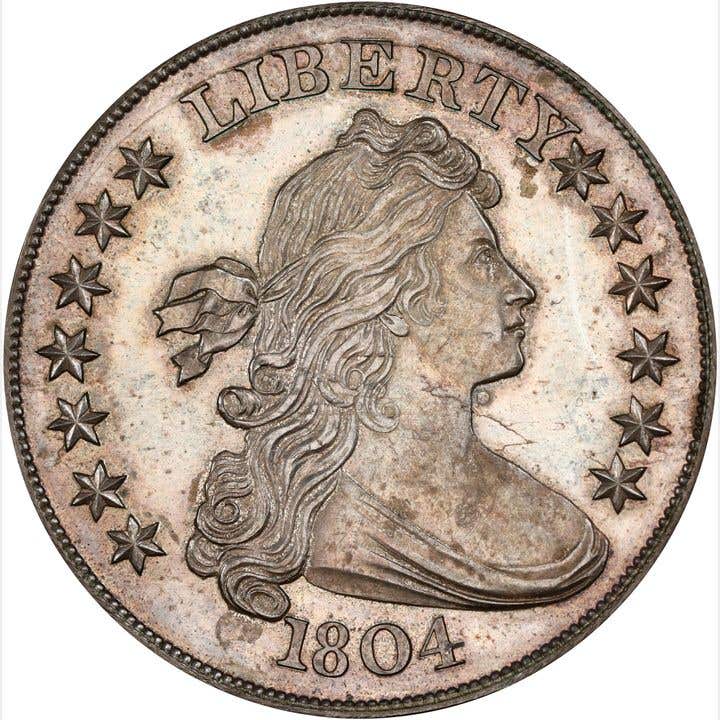U.S. Mint Boxed in by Legislation
In the year 2018, the U.S. Mint sold 245,500 ounces of gold among the four sizes of the bullion-issue gold American Eagles. In 2019, sales of these four coins fell…
In the year 2018, the U.S. Mint sold 245,500 ounces of gold among the four sizes of the bullion-issue gold American Eagles. In 2019, sales of these four coins fell to 152,000 ounces. With the surge in gold prices last year, sales rose to 844,000 ounces. Through Tuesday this week, the Mint’s year-to-date sales of these gold American Eagles were 387,500 ounces.
The news was similar for the bullion-priced silver Eagle dollars. Mint sales in 2018 totaled 15,700,000, another 14,863,500 in 2019, jumped to 30,089,500 in 2020 and was at 10,288.500 in 2021 year-to-date as of Tuesday this week (March 16, 2021).
The U.S. Mint thus far in 2021 has been unable to produce sufficient gold and silver American Eagles to meet continuing strong public demand. Retailers are now often quoting delivery days of as much as three to four weeks after payment or have often been forced to stop selling these coins altogether.
At the same time, private gold and silver ingot manufacturers are ramping up production levels, partly because they are able to pay prices for physical metals higher than paper market spot prices and pass along these higher costs to customers.
Gold and silver American Eagle sales in 2021 would have been much higher had the U.S. Mint complied with federal statutes. 31 U.S. Code § 5111(a)(1) states, “The Secretary of the Treasury shall mint and issue coins described in section 5112 of this title in amounts the Secretary decides are necessary to meet the needs of the United States.” (Emphasis added.)
31 U.S. Code § 5112(e) states “Notwithstanding any other provision of law, the Secretary shall mint and issue, in qualities and quantities that the Secretary determines are sufficient to meet public demand, coins which— (1) are 40.6 millimeters in diameter and weight 31.103 grams; (2) contain .999 fine silver; (3) have a design— (A) symbolic of Liberty on the obverse side; and (B) of an eagle on the reverse side.” (Emphasis added.)
Therefore, in order to comply with these statutory requirements, the use of the term “shall” instead of “may” means that the U.S. Mint should now be striking greater quantities of gold and silver American Eagles.
As we have been informed by the U.S. Mint’s primary distributors, called Authorized Purchasers, the Mint has not been able to further ramp up production of gold and silver American Eagles because it has not been able to acquire sufficient metals to do so.
The global shortages of physical gold and silver inventories have been rampant for more than a year now. When shortages persist for such a long time, the free-market reaction would be for prices to increase. Indeed, gold and silver prices have increased over the past year. From March 19, 2020, through March 16, 2021, the closing COMEX gold price rose 17.7 percent, from $1,470.75 to $1,730.50. From March 18, 2020, through March 15, 2021, the COMEX silver close jumped 121.2 percent, from $11.74 to $25.97.
Despite these impressive price gains, the shortages of physical gold and silver have persisted. That signals that the gold and silver prices for physical metals should be even higher than the spot prices reflected by trading in the paper markets such as the New York COMEX or in the London Bullion Market Association.
As current buyers of physical gold and silver products are aware, these products today cost much higher premiums above the paper market spot prices than in normal markets.
In 31 U.S. Code § 5112(f)(1), the statute requires that, “the Secretary shall sell the coins minted under subsection (e) [silver Eagles] to the public at a price equal to the market value of the bullion at the time of the sale, plus cost of minting, marketing, and distributing such coins (including labor, materials, dies, use of machinery, and promotional and overhead expenses).” (Emphasis added.)
A similar statute applies to prices of the gold American Eagles. Consequently, the Mint could theoretically offer to pay a price higher than the paper market spot prices to acquire sufficient physical gold and silver inventories to ramp up production to “meet public demand.” That is what the private fabricators of gold and silver ingots are now doing to obtain the metals needed to fill the surge in orders they are receiving – which effectively reduces inventory for the Mint to acquire.
Unfortunately, other statutes prohibit the U.S. Mint from offering to pay prices higher than established by the paper market spot prices. In 31 U.S. Code § 5116(a)(3) states in part, “The Secretary shall pay not more than the average world price for the gold.” 31 U.S. Code § 5116(b)(2) states in part, “The Secretary shall not pay more than the average world price for silver under any circumstances. As used in this paragraph, the term ‘average world price’ means the priced determined by a widely recognized commodity exchange at the time the silver is obtained by the Secretary.”
The “widely recognized commodity exchange” spot price that the U.S. Mint uses to purchase and sell gold and silver is the London Bullion Market Association, the world’s largest commodity exchange for these metals.
Effectively, the U.S. Mint is prevented from complying with one statutory requirement to produce gold and silver American Eagles sufficient to meet public demand by another statutory requirement that prohibits it from paying a price higher than the paper market spot price.
Technically, the U.S. Mint has one loophole where it could acquire more gold inventory.
31 U.S. Code § 5116(a)(3) elsewhere states, “In the absence of available supplies of such gold at the average world price, the Secretary may use gold from reserves held by the United States to mint the coins issued under section 5112(1) of this title.”
I suspect the reason that this is not happening is that the Treasury Department does not want to report that its gold reserves are declining, an action which could have a negative impact on the value of the U.S. dollar.
Could the statutes be changed to allow the U.S. Mint to purchase physical gold and silver at prices above the paper market spot prices? Yes. However, I very much doubt that would ever be considered by the U.S. government. The federal government has a strong interest in holding down gold and silver prices, as a major tactic to minimize the interest rate it pays on its almost $30 trillion of debt. This concern would almost certainly override any consideration of allowing the U.S. Mint the flexibility to acquire sufficient gold and silver inventory to meet public demand.
Patrick A. Heller was honored as a 2019 FUN Numismatic Ambassador. He is also the recipient of the American Numismatic Association 2018 Glenn Smedley Memorial Service Award, 2017 Exemplary Service Award, 2012 Harry Forman National Dealer of the Year Award and 2008 Presidential Award. Over the years, he has also been honored by the Numismatic Literary Guild (including twice in 2020), Professional Numismatists Guild, Industry Council for Tangible Assets and the Michigan State Numismatic Society. He is the communications officer of Liberty Coin Service in Lansing, Mich., and writes Liberty’s Outlook, a monthly newsletter on rare coins and precious metals subjects. Past newsletter issues can be viewed at www.libertycoinservice.com. Some of his radio commentaries titled “Things You ‘Know’ That Just Aren’t So, And Important News You Need To Know” can be heard at 8:45 a.m. Wednesday and Friday mornings on 1320-AM WILS in Lansing (which streams live and becomes part of the audio archives posted at www.1320wils.com).









